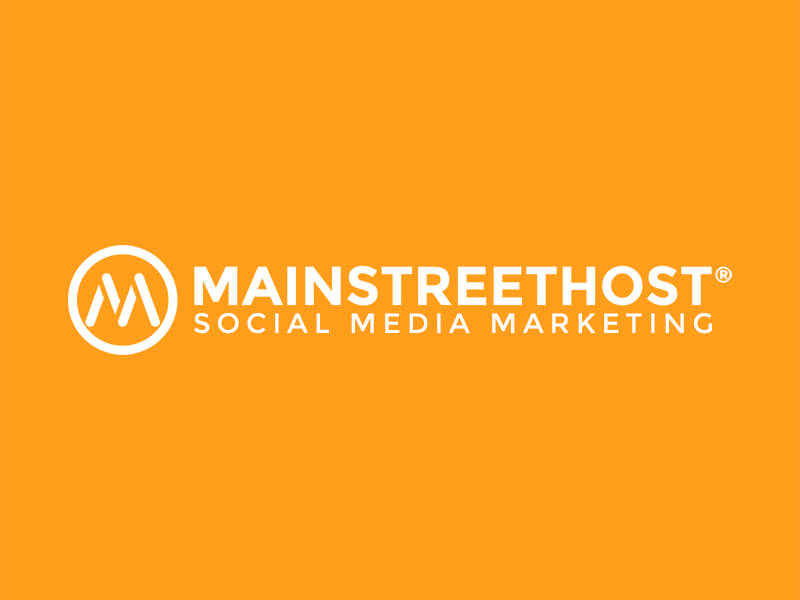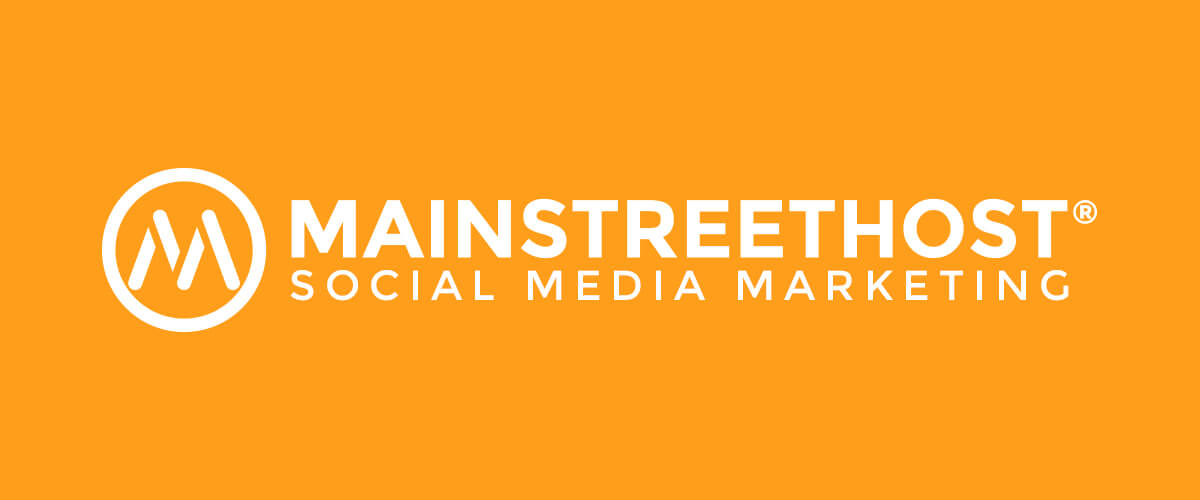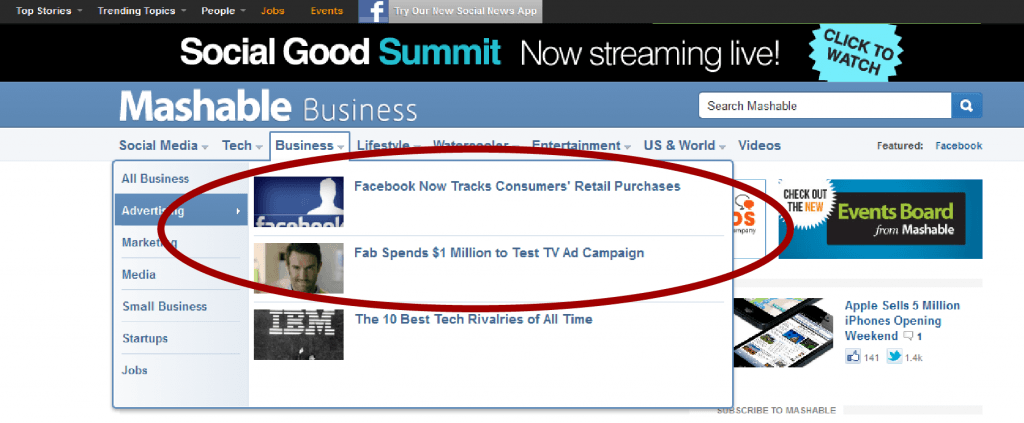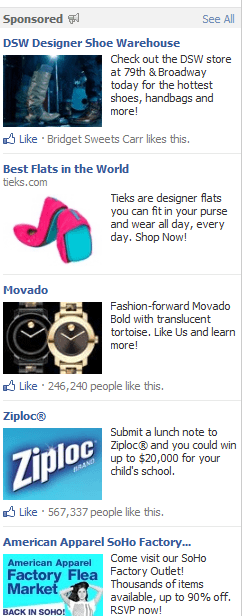A few days ago, I was perusing Mashable when I came across two interesting stories.
These two stories captured my attention, and I thought it particularly intriguing the way in which they were positioned, one following the other. I’m sure it wasn’t Mashable’s intention, but this positioning seemed to be like an implicit comparison: Facebook ads vs. TV ads. It caused me to start contemplating and juxtaposing the two different methods of advertising.
The advertising world is currently abuzz with talk of Facebook’s new attempts to prove its ads truly do generate sales and also talk of two eCommerce sites that recently made their television-commercial debuts.
Recently, Fab.com, an eCommerce site that sells everything from artwork to furniture to pet supplies and that boasts 7.5 million members, spent $1 million to test a television advertising campaign. Until now, Fab’s advertising has been confined to social media: sponsored stories initially followed by an ad that took up the entirety of the Facebook log-out page, which according to Ad Age costs north of $700,000 per day. They’ve had tremendous success with social media marketing; 50% of its sign-ups come from social sharing. Yet, not content to rest on its laurels, it has boldly entered the world of television.
And Fab isn’t the only eCommerce site to integrate TV commercials into its advertising efforts: Warby Parker, which sells prescription eyeglasses, is also testing out television and commenced its first venture on to the small screen last week. Though, Warby Parker’s $250,000 budget is a fraction of Fab’s.
Fab and Warby Parker’s television tests seem to me incredibly savvy advertising moves. The New York Times published an article on the Warby Parker commercial in which co-chief executive and co-founder Neil Blumenthal stated this:
Our assumption is that TV has the biggest megaphone, especially for an unknown brand.
Both Fab and Warby Parker use this megaphone to its full potential. In a world where social media advertising is becoming more and more relevant, traditional television advertising offers things that Facebook doesn’t, “and the TV tests of these two eCommerce sites shine the light on the pros of TV advertising and the cons of Facebook advertising.
Companies That Court Consumers
Television offers more opportunities to market creative, attention-grabbing content than Facebook does. We love visual content, and it seems to me that a 30-second spot on TV can be much more compelling and captivating than a bland Facebook sponsored story. Consider the Fab commercial, which features a man with a Midas-like touch: his lady friend is on her way to his apartment, so in order to impress her, he touches various objects in his apartment (a couch, an alarm clock, kitchen utensils), and they instantly and magically transform from lackluster and dull to fabulous and colorful.
This commercial is fun and vibrant (both literally and creatively). It weaves a brief but interesting narrative. While watching the commercial, I realized that I became caught up in this narrative. Sure, I was aware that I was being solicited by Fab to buy their products, but this commercial seems to me a much softer, less invasive form of advertising than Facebook ads, which are much more overt: there’s room only for a picture and a call to action urging me to do things like “Buy now!” or “Learn more!”
With television commercials, advertisers can win the hearts of consumers by telling stories and also pandering to emotions. And isn’t playing to our fear, happiness, sadness, curiosity, etc. more effective than a generic call to action? Don’t consumers have to be “courted” by brands through creative and personal advertising and marketing efforts rather than simply being urged to buy something?
Take the Warby Parker commercial.
This commercial, which features a delightful British voiceover that inevitably conjured in my mind images of Downton Abbey characters, is fanciful, imaginative, charming, and playful. The vintage quality; the artful combination of collage, animation, and live film; and the endearingly perplexing giant eyeballs riding unicycles all captured my interest. The Warby Parker TV spot concludes with a call to action (Visit WarbyParker.com. Don’t delay!), but the difference here is that this call to action has substance behind it. Warby Parker has provided me with a host of reasons why I should visit their website (and why I should buy their products). They’ve appealed to me visually through a quirky, inimitable commercial and also logically by talking about their discounted prices. Facebook ads seem slightly empty and hollow in comparison. I know brands want me to buy their products now, but on Facebook, they provide very little reasoning why I should; the sponsored stories lack substance, and they approach me simply as a potential paying consumer, when who I really want to be treated as is an individual whose needs extend beyond the mere material: the need to impress my significant other, as captured in the Fab commercial, or the need to simultaneously look stylish and save money, as depicted by Warby Parker.
I think a brand’s ability to understand my unique needs relates closely to trust. Nielsen published a report that revealed that TV commercials have a higher trust value than social media ads: 46% of people trust ads on TV, while 32% of people trust ads on social networks. I wonder, is this low trust value of social media ads is attributable to their unconcealed, blatant, and glaring sales approach?
What other words are pouring forth from the Fab and Warby Parker television-commercial megaphones that represent effective advertising techniques? The commercials tell me why I should buy home furnishings from Fab or why I should buy eyeglasses from Warby Parker, which is key in our digitally saturated society. There are numerous eCommerce sites out there, available to me with the few clicks of my computer mouse. The internet offers me an array of choices, so brands have to compete to capture my interest and give me a compelling, well-founded reason to buy their products/services. I’m unsure of whether this can be accomplished with the short copy and single picture that encompass Facebook ads.
The Second Screen and Targeted TV Commercials
Creative content is just one way in which the television tests of these two eCommerce sites elucidate the fortes of television advertising and the foibles of Facebook advertising. The New York Times mentioned that one of the benefits of television advertising is its ability to tap into the second screen phenomenon, in which people use their tablets and/or mobile phones while watching television. I found some interesting research regarding the ways in which consumers multitask on various screens: 19% of tablet and smartphone owners look up product information for an ad they see while watching TV, and 16% look up coupons or deals related to an ad they saw on TV. So, even though we’re multitasking, we’re not completely missing advertisers’ messages.
Now, while researching for this post, I realized that one of the main advantages of Facebook is its ability to make ads relevant for users. I spend a lot of time shopping online, so the majority of my Facebook ads are related to shopping. I’m also targeted by brands that my friends have liked, again boosting the relevancy factor of these ads. Oftentimes when I’m watching television, I see commercials for things that are of no interest to me. However, the Warby Parker commercial targets audiences much like Facebook does. According to The New York Times, Warby Parker is making the most of its $250,000 budget:
The company will run the spot on Dish TV and DirecTV using addressable technology, which enables the spot be aimed more precisely to the Warby Parker demographic target: men and women ages 18 to 34 who like to buy designer-style eyewear at lower prices.
Commercials can be steered on a household-by-household basis; the house at 1313 Mockingbird Lane or 5133 Kensington Ave. sees a certain spot, while the house at 1315 Mockingbird Lane or 5135 Kensington Ave. is shown something different.
(Kudos to the NYT for using street names like “Mockingbird Lane” and “Kensington Avenue” that perfectly suit the British voiceover.)
Dynamic vs. Flat Ads
I’m not completely knocking Facebook ads, because Fab proves that they can work. However, it seems to me that they’re shrouded in an enigmatic complexity. Are they worth the investment? Are they not? The debate is ongoing. And, this ad-induced befuddlement coupled with incessant public speculation about Facebook stock seems to complicate the whole issue.
It seems to me that television commercials have ample potential to be dynamic, while Facebook ads often struggle to be anything but flat. Though only time will tell if the commercials for these two eCommerce sites are successful.
Maybe Fab can share some of that Midas-like touch to transform Facebook ads from drab to fab?
Until then, I’ll be marveling over the British voiceover in the Warby Parker spot, and channeling the Dowager Countess to try and determine which style of Warby Parker eyeglasses I should purchase. The real question I need to ask myself: What Would the Dowager Countess Do?




